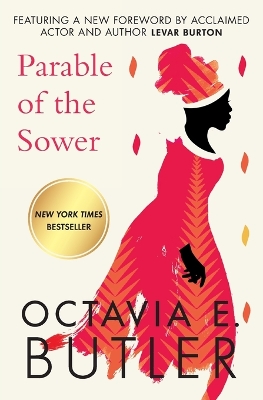Reviewed by brokentune on
There is only one word to describe the world that Butler built in Parable of the Sower and that word is
BRUTAL.
I recently read a review of one of her other books, Kindred, in which the reviewer used the same word, and I was wondering if that really could be an appropriate description because, after all, a book is just words on a page right? What could possible be so bad about that?
And then I started reading The Parable of the Sower, Butler's story set in California in 2024, where communities rely on walls to keep them safe from wild animals, robbery, rape, and murder. But of course, walls are made to crumble. Communities disperse or are erased, and all that is left is a dog eat dog world.
"Civilization is to groups what intelligence is to individuals. It is a means of combining the intelligence of many to achieve ongoing group adaptation."
What made this book special for me was its immediacy. The book was published in 1993, but is set in a 2024 that is not all that futuristic. There are no clocks striking thirteen. The only thing that has advanced are drugs. I was going to add 'human atrocities' but they have remained the same throughout time, they just disappear from focus, are kept outside the walls of social order. In this sense, The Parable of the Sower, tears down the illusion that social order is ever stable and that social constructs that are based on ideologies or intangible ideas are of any use to man when faced with a battle for survival.
I guess from the setting, the description of looting and arson, and the depiction of the police as corrupt and untrustworthy, that Butler may have drawn some inspiration from the 1992 Los Angeles riots. Remembering the images of the time and having seen similar events unfold in more recent years, Butler really captures the volatility of society in this novel.
Fortunately, however, in her motley crew of main characters, Butler also captures some of that human spirit that fights against this brutality and that has compassion for its fellow beings and draws strength from the support of and belief in mankind. There may be few of them, but given a chance they are set to thrive, much like the seeds that hit a fertile ground.
I am sorry if I have waffled my way through this review but The Parable of the Sower was one of those books that just provides so much food for thought. For all its brutality and distressing scenes and descriptions, it was a gripping read and I am looking forward to reading more by the author.
Reading updates
- Started reading
- 5 March, 2016: Finished reading
- 5 March, 2016: Reviewed
